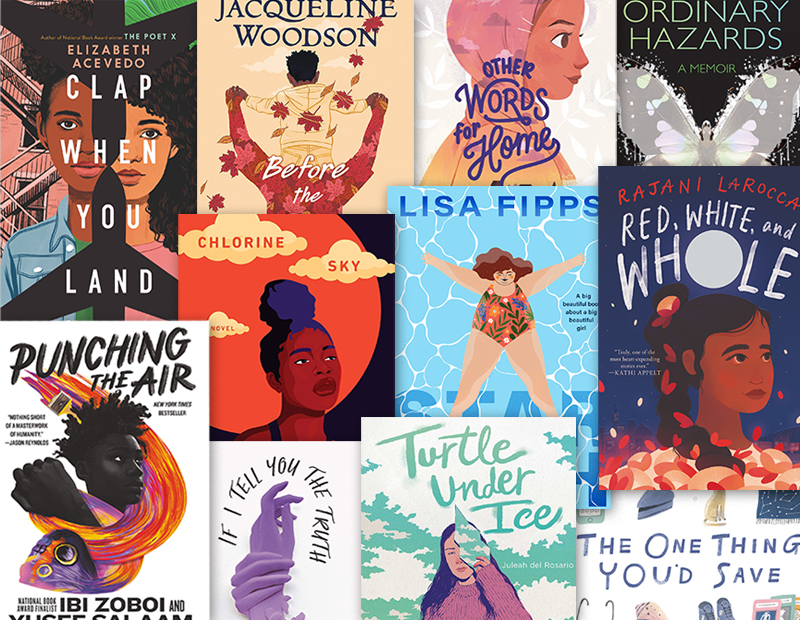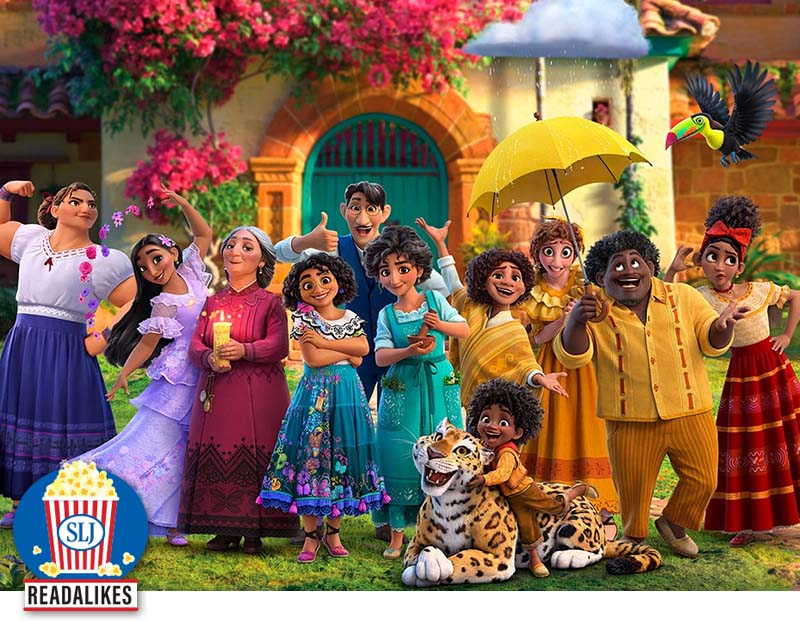A Thousand Glass Flowers Is Never Enough: An Interview with Evan Turk

Lest you believe that the only blog I read is my own, I’m starting today by pointing out that it would behoove you, maybe even before I tell you a word about today’s author/illustrator and his book, to take a gander at the recent post at Seven Impossible Things Before Breakfast called A Thousand Glass Flowers. Jules Danielson has a way of sussing out process like no other person I know. And when the process comes from one Evan Turk, you know it’s gonna be good.
Years and years and years ago I encountered the picture book biography Grandfather Gandhi. The writing was good, but the art . . . I was blown away. This “Evan Turk” fellow sure knew how to make a purdy picture. But it was my encounter with Muddy: The Story of Blues Legend Muddy Waters that gave me the realization that Turk was a serious force to be reckoned with. The Storyteller blew me away and You Are Home was this complete shift in content that I admired. So imagine my surprise when I saw the cover of his latest endeavor. Check this out:
ADVERTISEMENT
ADVERTISEMENT

Is not that beautiful? Does it not pulse on the page before your eyes? And that’s even before you learn that it’s the story of Marietta Barovier, the Renaissance artisan who redefined Venetian glassmaking. Reading the book is like dipping yourself into a sea of color. So, naturally, I had questions. And Evan, as it just so happened, had answers.
BB: Hello, Evan! Good God, man, you are certainly a fan of giving yourself excruciatingly difficult jobs. If you’re not summing up the national parks of America then you’re creating books on Muddy Waters. When you’re not encapsulating whales or methods of storytelling or even the life of friggin’ Gandhi, that is. Now you seem to have zeroed in on early Renaissance feminism. My question is an obvious one: How on earth do you go about deciding what to write/illustrate?
Evan Turk: For illustrating, I’m usually open to whatever comes my way! I like learning about new topics, so I am always thrilled to explore something different. If it’s something that I can imagine my work being a good fit for, I’m open to it. For books I am writing and illustrating myself, it usually comes out of my own interests, reading, and travels. I am attracted to topics that I can imagine having fun drawing! The Storyteller, Heartbeat, You Are Home, and A Thousand Glass Flowers all came out of travel and research. I think I am also trying to learn what types of stories I’m best positioned to illustrate and tell, as well, rather than only following my interests.
BB: Sounds fair. Let’s look at your latest then. Here we have a woman, Marietta Barovier, who invented a new type of glass-blowing in the 15th century. In the book you steep the reader in Venice. Which came first then: Going to Venice and discovering Marietta or discovering Marietta and going to Venice for your research?

ET: I learned about Marietta before going to Venice on my honeymoon with my husband! I had read Murano: The History of Venetian Glass-Blowing by Alessandro Marzo Magno, and he mentioned Marietta’s rediscovery of millefiori. Millefiori style glass is right up my artistic alley: bold, colorful, busy, and full of patterns, so I was intrigued and wanted to know more about her. On our visit, I fell in love with the city. At home, I did more research on her, to try and find as much about her life as I could, and eventually went on a trip back to Venice for research. That trip was scheduled around the Regatta Storica, a historic gondola pageant that happens every year in September. On that trip, I was also able to talk with glass historian Rosa Barovier Mentasti, a relative of Marietta’s, and an incredible glass artist Davide Salvadore who works with millefiori techniques in his own work. I also used the trip to scout locations for where certain parts of the book might take place, and to develop the style I would use for the art. I usually come up with different methods of illustrating when drawing on location, because it forces me to be more innovative and absorb what is around me.
BB: Surely you faced some difficulties in putting Marietta on the page. As you mention in your Author’s Note in the book, it’s difficult to find information about her today as she lived so long ago. With that in mind, how would you classify A THOUSAND GLASS FLOWERS? Would you consider it fictionalized nonfiction, nonfiction, or fiction?

ET: I think maybe I would call it fictionalized nonfiction, or historical fiction, or informational fiction, which was another term I had seen before. It’s interesting, because with the historical figures we already learn about in the curriculum, we are used to calling that nonfiction, despite the fact that the stories are often incomplete, embellished, or downright distorted. But with a figure where there isn’t as much documentation, it can be a bit trickier. For instance, as far as anyone knows, Marietta was the first woman to have her own glass workshop in Murano, but I chose to hedge a bit and say “one of the first” just because there hasn’t been exhaustive research on it. There were definitely some difficulties tracking down information! Many of the articles written about her are in Italian, so that took some translating (my bit of Italian combined with Google Translate) Most of the books that contained any mention of her were far-flung and difficult to get a hold of, but I was helped by a wonderful librarian (hooray for librarians!), Regan Brumagen, up at the Corning Museum of Glass that scanned several books for me and helped me zero in on the correct passages. Another aspect that was difficult was historical accuracy in the illustrations. For instance, finding illustrations and paintings of Renaissance glass furnaces, as well as the techniques and tools that were used in the 1500s (Glass historian William Gudenrath, also at the Corning Museum, helped me greatly, and also created an amazing resource for the history of Renaissance Venetian glass at https://renvenetian.cmog.org/home.) The Barovier house in Murano is no longer there, but I created my own design and extrapolated what it might have looked like based on architectural styles of that time period and similar buildings. Similarly, the mosaic murals on Basilica San Marco are also different today than they were in the 1500s, but there is a painting by Gentile Bellini that depicts the cathedral during this same time period, so I based my recreation off of that historical painting. It’s a fun kind of sleuth-work to find the right reference images!
BB: Was there anything you wanted to include in this book that, for whatever reason, you had to cut out?

The city has so much magic and so much history that I loved learning about, but a lot of it just wasn’t relevant to the few pages I had to tell Marietta’s story. I did manage to squeeze a lot in there though! For instance, the famous Rialto Bridge, which is now stone, was just a wooden bridge during Marietta’s time, so you can see it in that state in the illustration of the Grand Canal. I also cut out some vignettes about daily life on Murano, which were interesting, but distracted from the main story a bit. Early on, I wanted there to be something about Venetian Carnevale and its incredible costumes, but it really had nothing to do with the story. I really had to focus on just trying to tell one story, and not the whole story of Venice.
BB: Sumptuous doesn’t begin to describe the art you’ve made for this book. Just look at those colors! So different from your work on other books. How did you come to decide on the look of this title? Did you do anything differently in your art than you’ve done in other books?

ET: Thank you so much! This was one book where I really wanted color and light to take center stage. Venice, glass, and millefiori are all about color and light. I wanted to capture the feeling of how everything glitters off the canals there, and the intense contrast between the dark of the workshop and the fire of the furnace. Everything had to glow and glitter! There’s even some shimmering gold in the art and the printing. Also, even though it is a historical book, I didn’t want it to feel old and dusty. The Renaissance wouldn’t have been sepia-toned if you were living in it, so I wanted to capture all that color and vividness. I used oil pastel and colored pencil on top of vivid watercolors, which was a similar technique to the illustrations I did for Muddy, but changed to fit the topic and the era. I looked at a lot of Renaissance artists, but also impressionists, who captured that feeling of light and color that I was after. I also looked a lot at Sonia Delaunay and the bold concentric circles and patterns in her work that remind me of millefiori. By the last spread, I wanted it to feel like the whole city was made out of brightly colored millefiori glass.
BB: How long does a book of this sort take for you? From the moment you got the idea to completion?
ADVERTISEMENT
ADVERTISEMENT
ET: This book took a bit longer, because I wrote and illustrated You Are Home sort of in the middle of working on it! I began the manuscript in summer of 2016, so it took about 4 years in total! I like working on projects over a long period of time, though, because it gives them a chance to evolve beyond my initial idea.
BB: Have you seen or handled a millefiori bead yourself?

I have! They are magical. Millefiori techniques are still widely used in Murano glass. It could be a rosetta bead, like what Marietta created, or in the use of murrini, which are thinner sliced segments of a millefiore cane, which can be used to decorate blown glass. I was lucky enough to be given an extra murrine from Davide Salvadore’s workshop, which show how incredibly complex millefiori can be. He creates the murrini, and then decorates his large blown glass pieces with them. I was also able to find a rosetta bead similar to the kind Marietta made on Etsy, of all places, and also bought a millefiore cane to be able to help kids understand the process a bit more, especially once I start doing school visits again.


BB: For that matter, I know you visited glassblowing workshops in your travels. Have you blown glass yourself? If so, what was your takeaway?

ET: I had to give it a try! My husband and I went to the Corning Museum of Glass in Corning, NY for a weekend workshop. It was so much fun, and very exciting. I’d say my main takeaways were how incredibly difficult of a craft it is, and how intensely hot the furnaces are. As a craft, you have to be constantly aware of the temperature of the glass, the shape of the glass, spinning it to keep it even, making sure you use the correct amount of pressure and air to shape it. And this was just to make the most simple objects you can imagine! The other thing that shocked me was just the HEAT. You’d imagine that a glass furnace would be hot, but I wasn’t prepared for just how hot it is. There’s a very primal fear reaction because you have to put your hands so close to something that feels like it’s burning you. They even gave us Kevlar sleeves to protect our wrists from the heat. I kept thinking about how it must have been for Marietta to experience that heat for the first time, and how brave she would have been to push through it to keep working.
BB: Man. Okay, last question then. Finally, what are you working on next?
ET: I just finished up the illustrations for a picture book biography of one of my favorite artists, Ben Shahn, written by Cynthia Levinson. It’s called The People’s Painter: How Ben Shahn Fought For Justice With Art and it comes out from Abrams next April! I’m so excited for people to see that book. Right now, I am working on the illustrations for Color the Sky a lovely book by David Elliot about colors and birds, which is such a fun change of pace and will be out from Little Brown in 2022. And for the future, I’m working on my manuscript about another of my favorite artists, David Hockney, for To See Clearly: A Portrait of David Hockney. (Abrams, Fall 2022).
I want to see all of those.
Big thanks to Evan for patiently answering my questions and also to Chantal Gersch and Simon & Schuster for organizing this. I do appreciate it.
Filed under: Interviews
About Betsy Bird
Betsy Bird is currently the Collection Development Manager of the Evanston Public Library system and a former Materials Specialist for New York Public Library. She has served on Newbery, written for Horn Book, and has done other lovely little things that she'd love to tell you about but that she's sure you'd find more interesting to hear of in person. Her opinions are her own and do not reflect those of EPL, SLJ, or any of the other acronyms you might be able to name. Follow her on Twitter: @fuseeight.
ADVERTISEMENT
ADVERTISEMENT
SLJ Blog Network
Name That LEGO Book Cover! (#53)
Exclusive: Vol. 2 of The Weirn Books Is Coming in October | News
Fighting Public School Book Bans with the Civil Rights Act
Take Five: Middle Grade Anthologies and Short Story Collections
ADVERTISEMENT








This book looks beautiful! In addition to the lovely and highly original pictures, I really appreciate the in- depth research that brings high quality to an informational book.
I can’t wait for the book about Ben Shahn. It seems that a small number of artists are the subject of a disproportionate number of children’s books. It’s about time to introduce Ben Shahn to kids.